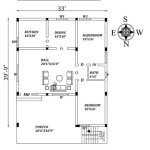AutoCAD Floor Plan Sample DWG File: A Comprehensive Guide
AutoCAD is a powerful software application widely used in architecture, engineering, and construction (AEC) for creating precise and detailed drawings, including floor plans. A floor plan sample DWG file serves as a valuable resource for designers, contractors, and clients, providing a visual representation of a building's layout and key design elements. This article aims to guide you through understanding the key elements of a floor plan sample DWG file, its importance, and how to utilize it effectively.
Understanding the Structure of a Floor Plan Sample DWG File
A floor plan sample DWG file typically includes various layers and objects representing different aspects of the building design. These elements are organized in a hierarchical structure, allowing for easy navigation and modification. Some common layers and objects found in a floor plan DWG file include:
- Walls: These lines represent the interior and exterior boundaries of the building, defining the space and room layouts.
- Doors and Windows: These symbols represent openings in the walls, providing access and natural light to the interior.
- Furniture: This layer includes symbols for various furniture items, such as chairs, tables, sofas, and appliances, representing the planned placement and functionality of the space.
- Dimensions: These lines and text indicate the precise measurements of walls, rooms, and other design elements, ensuring accuracy and clarity.
- Text and Annotations: This layer includes labels, notes, and other text descriptions, providing additional information about the floor plan.
Each layer can be toggled on or off, allowing for focused viewing of specific design elements. The DWG file's structure ensures that the floor plan is organized, allowing you to easily navigate and understand the design intent.
Key Points to Consider When Using a Floor Plan Sample DWG File
Floor plan sample DWG files offer valuable insights into design principles and technical aspects of building construction. Here are key points to consider when employing this resource:
1. Adaptability and Customization
A floor plan sample DWG file provides a starting point for your own design. You can adapt and customize the existing elements to suit your specific requirements. This includes modifying wall dimensions, adding or removing doors and windows, and incorporating your preferred furniture styles.
2. Design Inspiration and Exploration
Floor plan samples can serve as inspiration for your own design projects. Reviewing various layouts, room arrangements, and design details can spark ideas and help you develop a unique concept. By studying different approaches, you can identify design trends, explore different possibilities, and refine your own creative vision.
3. Technical Knowledge and Building Codes
Floor plan samples can contribute to your understanding of building codes and construction standards. Observing the placement of structural elements, fire exits, and other safety features provides valuable knowledge for your own projects. You can learn about the technical requirements and regulations, ensuring compliance and safety in your own designs.
Utilizing Floor Plan Sample DWG Files Effectively
Maximizing the benefits of a floor plan sample DWG file requires a systematic approach. Follow these steps to enhance your experience and extract the most value from this resource:
- Identify your project requirements: Define your specific needs and design goals before exploring the sample file. This will help you focus on the most relevant elements and adapt them accordingly.
- Review the existing design: Analyze the sample file thoroughly, paying attention to the overall layout, room arrangements, and design features. Identify the elements that align with your needs and those that require modification.
- Customize and modify: Use the sample file as a foundation and make necessary changes to suit your project requirements. Experiment with different layouts, adjust wall dimensions, and incorporate your desired furniture and fittings.
- Seek professional advice: Consult with an architect or building professional for guidance on adapting the sample file to your specific needs. They can provide expert insights and ensure that your modifications comply with building codes and regulations.
By employing these strategies, you can effectively leverage floor plan sample DWG files to enhance your design process, gain valuable knowledge, and create innovative and functional spaces.

Floor Plan Free Cads

Autocad Tutorial Draw A House Floor Plan Free Cad Blocks In Dwg File Format

30 X30 House Layout Plan Autocad Drawing Dwg File Cadbull

40x62 Feet House Ground Floor Plan Drawing Dwg File

House Dwg Free Cad Blocks

Basic Floor Plan Drafting In Autocad 7 Steps Instructables

2d Floor Plan In Autocad With Dimensions 38 X 48 Dwg And File Free First Plans Modern House Layout

Floor Plan Free Cads

Single Family House Free Cad Blocks Dwg Files

30 X 60 Feet House Ground Floor Plan Dwg File Cadbull








